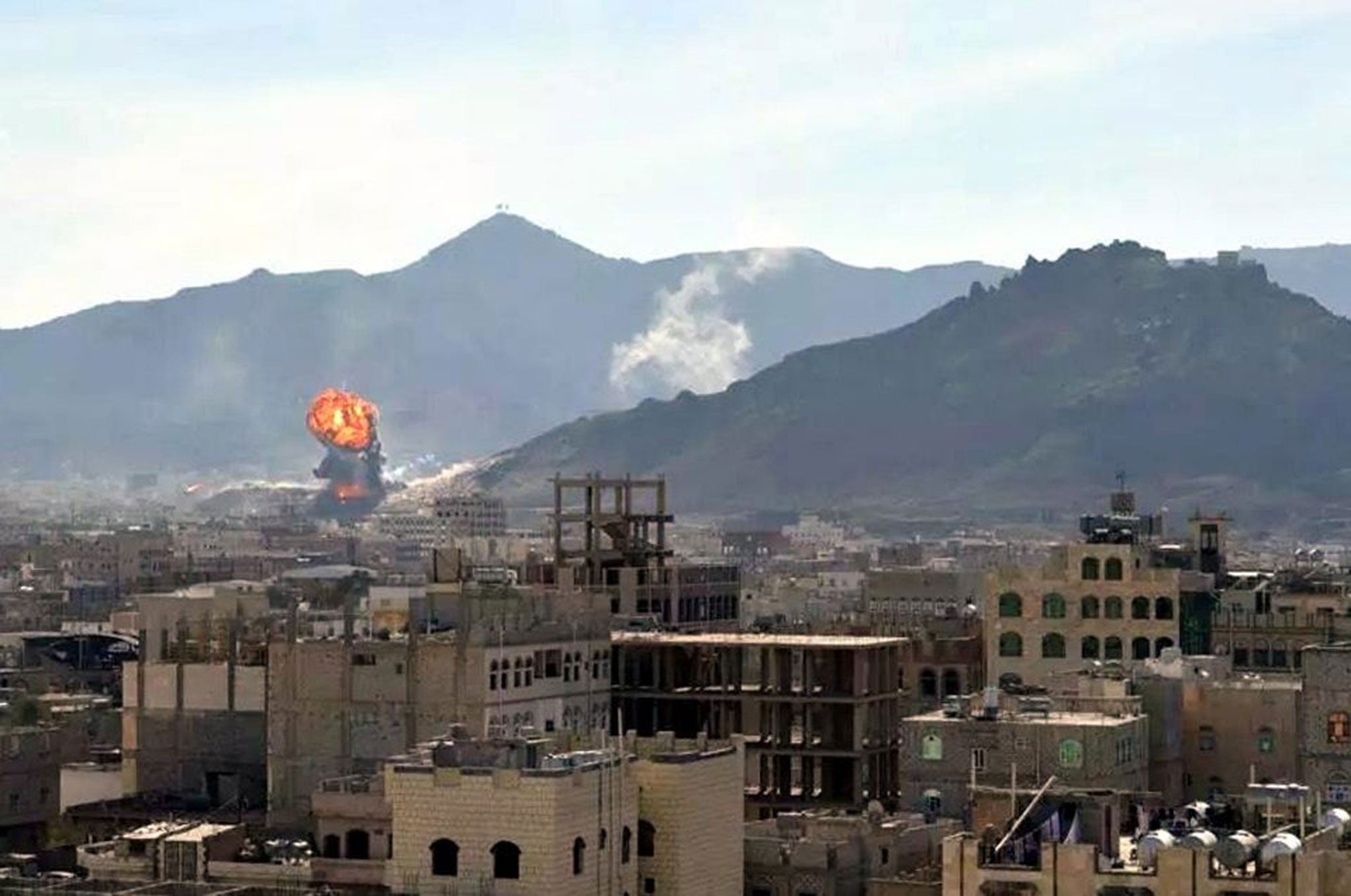An old hand is at work in Yemen's bloody civil war
Yemen is not Syria. But America’s skewed comprehension of the Middle East has now produced a remarkably similar scenario


It’s all about the Saudis. No matter how complex the new Yemeni civil war may appear – nor how powerful the Houthi rebels have become in the capital of Sanaa – it’s the Zaidi sect of Shiism which the Houthis represent that frightens the Sunni Wahabi monarchy of Saudi Arabia, and not without reason.
For more than five years, there has been armed conflict between Saudi forces and the Houthis, who at one point captured a low mountain range inside the Saudi border. The Saudis blame the usual suspects: Iran and the Lebanese Hezbollah. The Houthis blame the usual suspects: the Sunnis of Yemen and their Saudi supporters along – you guessed it – with the United States.
But like every crisis in the Middle East, the Yemen conflict, which has followed almost seamlessly from the civil war that brought Nasser’s Egyptian army into conflict with the Yemeni royal family - which was supported by the Saudis - is a little more nuanced than news dispatches might suggest. Indeed, Yemen’s first independent ruler was a Shia Zaidi – not a Sunni - who extended his territory over much of northern Yemen between the world wars.
The Imam Yahya was head of the Zaidi sect, whose beliefs and worship have almost as much in common with Sunni Islam as they do with Shiism, but he struggled against the Saudis when they seized Asir and Najran from what Yahya called “historic Yemen”.
Oxford scholar Euegen Rogan has described the ruthlessness of Yahya’s successor, his son Ahmed, who imprisoned and executed his rivals, opened diplomatic relations with the Soviet Union and China but then found himself confronted by Nasser’s call for the overthrow of “feudal regimes” in the Middle East.
Ahmad was not averse to condemning Arab socialism in verse (stealing private property was “a crime against Islamic law”). When Ahmed’s son Badr was overthrown in a military coup, Nasser supported the new republic and the Saudis sought to destroy it, supporting the Shia Zaidi rebels.
The sad story of Yemen’s partition and eventual (and unhappy) unity, of Sanaa’s 33-year history of dictatorial rule under Ali Abdullah Saleh - himself a Shia Zaidi - and then the inevitable minority claims of disenfranchisement, meant that the Arab awakening – a bloody ‘spring’ indeed in Yemen – would open still-painful wounds.
Saleh’s departure was to produce a new constitution unsatisfactory to the Houthis. The Saudis now feared that the Shia rebels of the north, named after Hussein Badreddin al-Houthi, the Zaidi leader killed in 2004, were supported by Iran and thus – given their own substantial Shia minority – a threat to the stability of the Kingdom itself.
Many were the Saudi claims of Iranian and Lebanese Hezbollah support for the Houthis – and many were the denials of Iran and the Hezbollah – but the growth of al-Qaeda’s Yemeni faction (following, of course, the same Salafist-Wahabi beliefs as Saudi Arabia itself) brought inevitable United States military involvement.
US drone strikes in Yemen, largely unmonitored by the West’s media, were directed against al-Qaeda, supposedly on behalf of the Saudi-supported Yemeni government. But in December 2009, Houthi spokesmen began to catalogue a series of US raids against their own forces, including 29 air raids which killed 120 people in northern Yemeni cities.
The Houthi advance on Sanaa divided the government army’s strength - since it was now battling al-Qaeda (on behalf of the Americans) and the Houthis (on behalf of the Saudis). Al-Qaeda in the Arab Peninsula moved north to fight the Houthis, garnering Sunni support as it did so.
Yemen is not Syria. But America’s skewed comprehension of the Middle East has now produced a remarkably similar scenario: instead of the US trying to destroy both the Shia Alawite Assad regime and its Sunni Isis enemies in Syria, it now appears anxious to crush the Shia Zaidi Houthis and their Sunni al-Qaeda enemies in Yemen. The Saudis would have it no other way.
